Mike Reinold – Online Shoulder Evaluation and Treatment Course
$399.00 Original price was: $399.00.$28.00Current price is: $28.00.
Mike Reinold Online Shoulder Evaluation and Treatment Course [Instant Download]
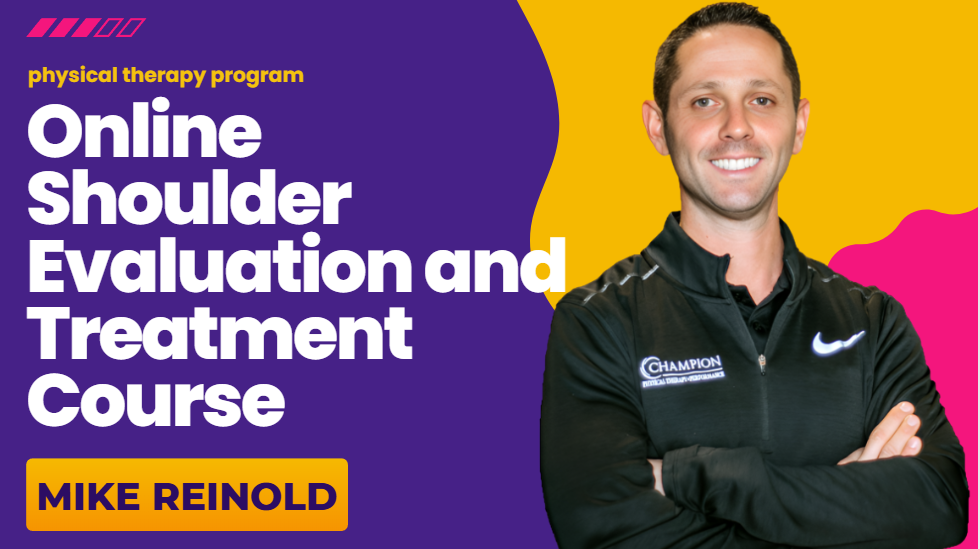
What is Online Shoulder Evaluation and Treatment Course?
Mike Reinold Online Shoulder Evaluation and Treatment Course is a physical therapy program teaching healthcare professionals how to properly assess and treat shoulder problems.
The program shows you step-by-step clinical examination methods, dynamic stabilization exercises, and manual therapy techniques that get real results with patients.
You’ll master treating rotator cuff injuries, shoulder instability, SLAP tears, and frozen shoulder conditions using Reinold’s proven methods from treating professional baseball players. The course gives you practical skills you can start using immediately in your clinic.
📚 PROOF OF COURSE
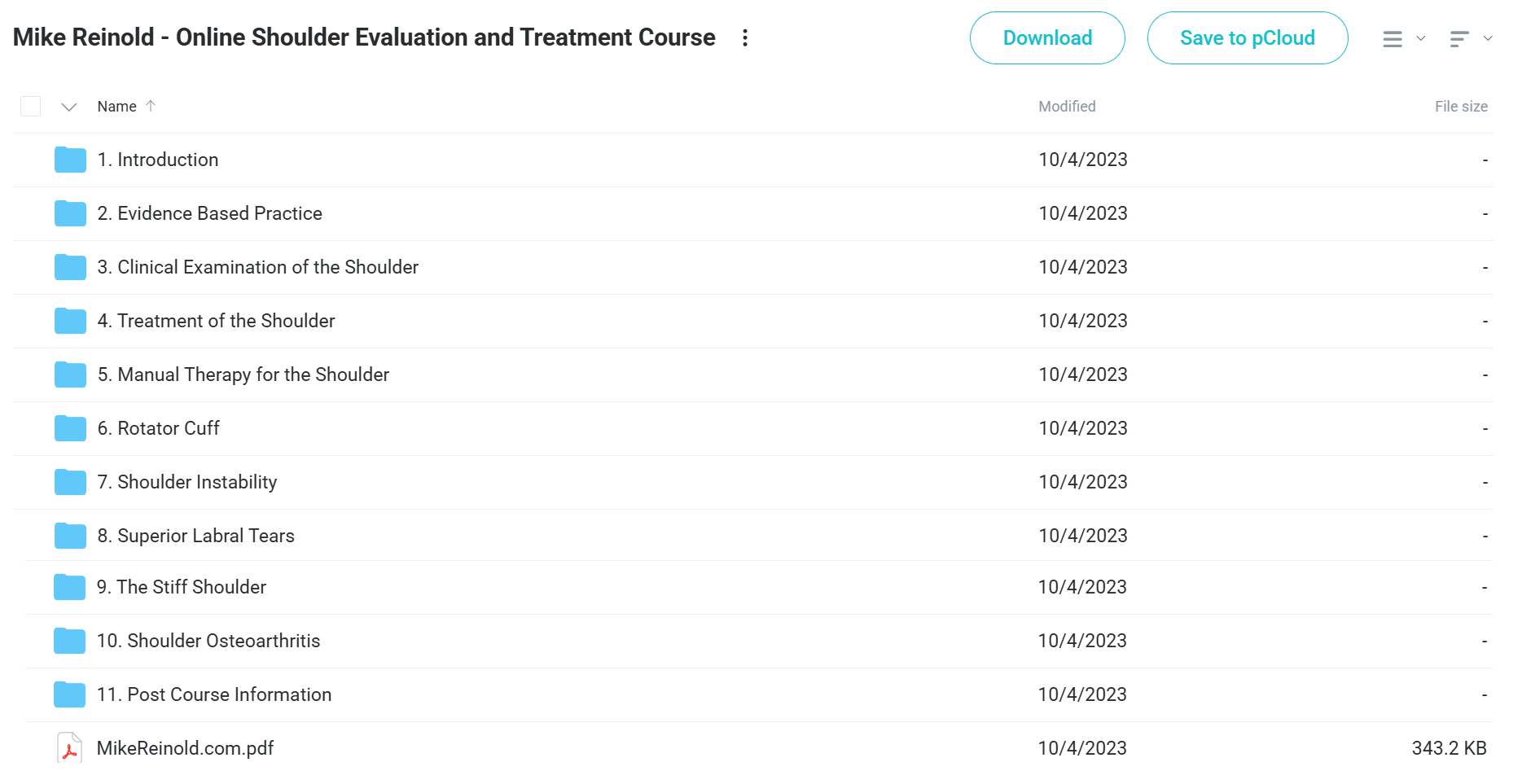
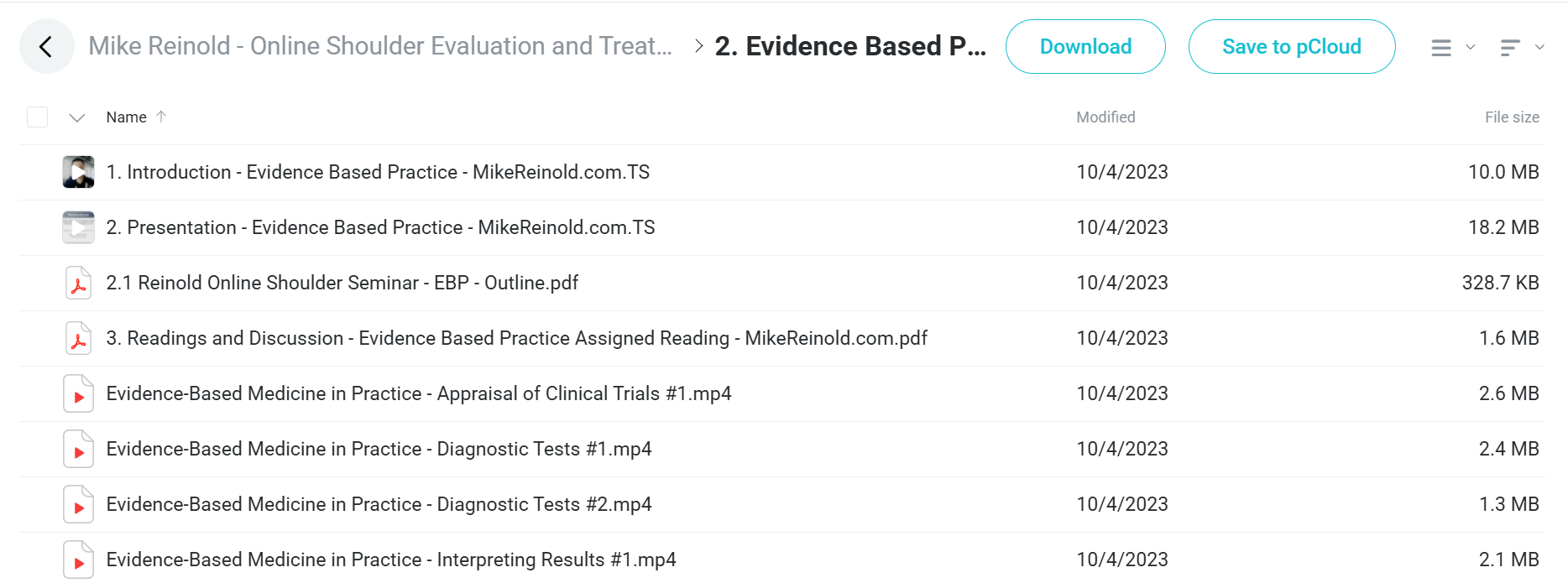
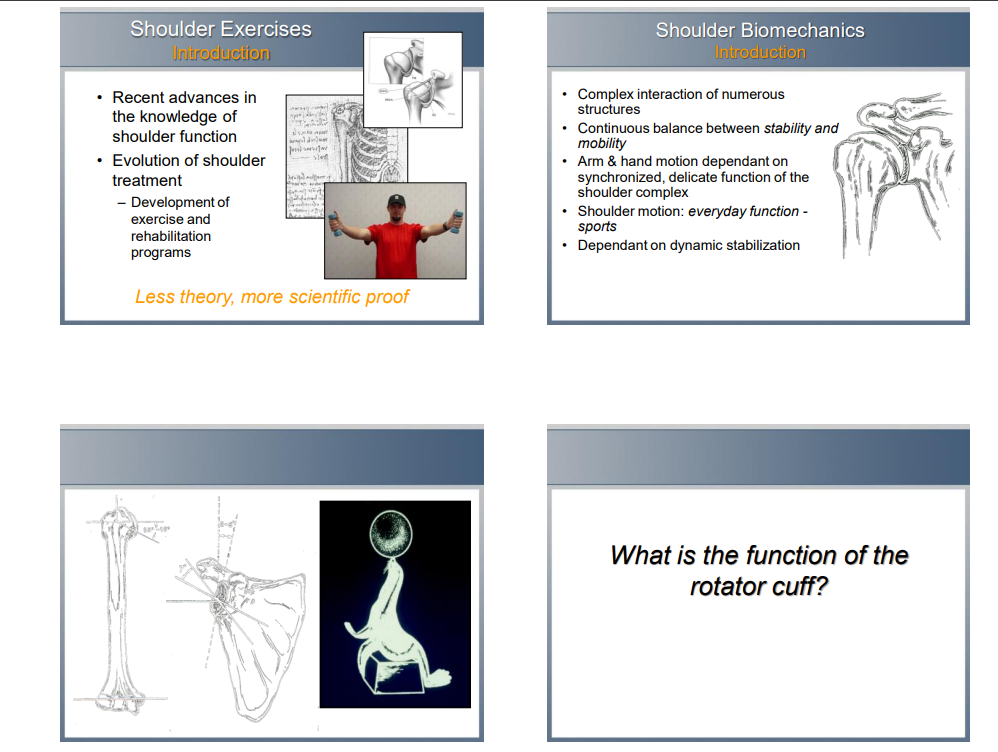
What you’ll learn in this course:
This shoulder course teaches everything you need to become a shoulder expert in physical therapy and rehabilitation. Here’s what you’ll learn:
- Clinical examination: Complete shoulder assessment techniques and special tests for different shoulder problems.
- Dynamic stabilization: Step-by-step exercises to improve neuromuscular control and proprioception in your patients.
- Manual therapy: Hands-on techniques to restore shoulder mobility and movement quality effectively.
- Rotator cuff rehabilitation: Treatment protocols for rotator cuff injuries and post-surgical care methods.
- Shoulder instability management: Rehabilitation principles for different types of shoulder instability conditions.
- SLAP tear treatment: Specialized approaches for superior labral tears and recovery protocols.
This course combines scientific evidence with real clinical experience. You’ll gain confidence treating complex shoulder conditions and see better patient outcomes right away.
Course Structure:
✅ Module 1: Introduction
This opening module establishes the course framework and learning objectives. Students receive detailed instructions on how to navigate the online platform and maximize their learning experience throughout the program.
The introduction sets expectations for the comprehensive nature of the course content and prepares students for the evidence-based approach that will guide all subsequent modules.
✅ Module 2: Evidence-Based Practice
Students learn to read research studies carefully and use proven facts to make treatment choices. The module covers how to review medical studies, understand test results, and know what research numbers mean for patient care.
Several video lessons show how to use research-based medicine in real practice. Students learn skills in checking research quality and using study results to help patients through organized readings and discussion materials.
Key learning parts include understanding test results, how to review medical studies, and using research findings to help patients in real situations.
✅ Module 3: Clinical Examination of the Shoulder
This basic module teaches step-by-step shoulder checking methods through detailed lessons and practical checklists. Students learn how to feel for problems, check movement, and do special tests for different shoulder issues.
The shoulder exam checklist gives a clear plan for checking patients that students can use right away in their work. Multiple lesson parts make sure students fully learn how to look, feel, and test shoulder function.
Students learn to tell the difference between shoulder problems through careful checking methods and build confidence in finding what’s wrong through proven testing steps.
✅ Module 4: Treatment of the Shoulder
Students explore complete treatment plans for shoulder problems, learning to create step-by-step recovery programs based on what each patient needs and their goals. The module focuses on choosing the right exercises, changing activities, and teaching patients important information.
Treatment plans are shown through several lesson parts that cover early, middle, and long-term care phases. Students learn to change treatments based on how patients respond and healing time frames.
Key ideas include how to make exercises harder over time, managing how much patients do, and combining hands-on therapy with active exercises for the best results.
✅ Module 5: Manual Therapy for the Shoulder
This special module focuses on hands-on treatment methods including joint movement, soft tissue work, and joint manipulation techniques. Students learn proper hand placement, how much force to use, and safety rules for different hands-on treatments.
The lessons show specific techniques for fixing joint stiffness, muscle tightness, and movement problems. Students learn when and how to add hands-on therapy into complete treatment plans.
Focus is placed on proven hands-on therapy methods and learning to combine these techniques with exercise therapy for better treatment results.
✅ Module 6: Rotator Cuff
Students learn complete care for rotator cuff problems, including the three main checking principles for shoulder pinching and rotator cuff issues. The module covers both non-surgery treatment plans and after-surgery recovery programs.
Detailed lessons address how to tell the difference between rotator cuff conditions and proper treatment changes based on tissue healing stages. Students learn to know when basic treatment works versus when surgery might be needed.
The content focuses on proven rotator cuff recovery methods, including step-by-step loading plans and function restoration techniques for getting back to activities.
✅ Module 7: Shoulder Instability
This module gives complete coverage of shoulder looseness checking and treatment, teaching students to tell the difference between various types of loose shoulder patterns. Students learn specific testing steps for front, back, and multi-direction looseness.
Treatment methods focus on strengthening exercises, balance training, and step-by-step return to activity programs. The lessons address both injury-related and non-injury looseness with proper care plans for each.
Students gain skills in creating stability-focused recovery programs that fix underlying problems while bringing back normal movement patterns and confidence in daily activities.
✅ Module 8: Superior Labral Tears (SLAP)
Students learn special checking and treatment methods for upper labral tears (SLAP tears). The module covers the challenges of finding these tears and proven methods for both non-surgery and after-surgery care.
Lessons address the complex nature of SLAP tear signs and the importance of careful checking to guide proper treatment choices. Students learn when basic treatment may work versus when surgery is needed.
Treatment plans focus on gradual loading steps and specific exercise changes needed for successful SLAP tear recovery while avoiding activities that make things worse during healing.
✅ Module 9: The Stiff Shoulder
This module addresses different causes of shoulder stiffness including frozen shoulder, after-surgery stiffness, and stiffness from other problems. Students learn to tell the difference between types of stiffness and use proper treatment plans for each condition.
The lessons cover hands-on therapy methods, stretching programs, and exercise steps specifically designed to bring back shoulder movement. Students learn to balance strong treatment with protecting tissues during different recovery phases.
Key learning includes understanding the natural course of frozen shoulder, knowing when treatment timing is best, and developing patient-centered treatment methods for gradual movement restoration.
✅ Module 10: Shoulder Osteoarthritis
Students explore complete care of shoulder arthritis, including both main shoulder joint and collar bone joint problems. The module covers non-surgery treatment plans and recovery following total shoulder replacement (TSA).
Several lessons address the unique challenges of treating arthritic shoulders, including pain control, keeping movement, and maintaining strength. Students learn specific changes needed for arthritic patients when choosing exercises.
The content includes special programs for after shoulder replacement recovery, covering safety rules, timing of progress, and function restoration goals specific to different types of shoulder replacement surgeries.
✅ Module 11: Post-Course Information
The final module provides course completion requirements including evaluation forms and examination materials. Students access continuing education unit (CEU) certificate information and course feedback opportunities.
This module ensures proper documentation of course completion and provides resources for ongoing professional development. Students receive guidance on implementing newly acquired skills in their clinical practice settings.
Who is Mike Reinold?
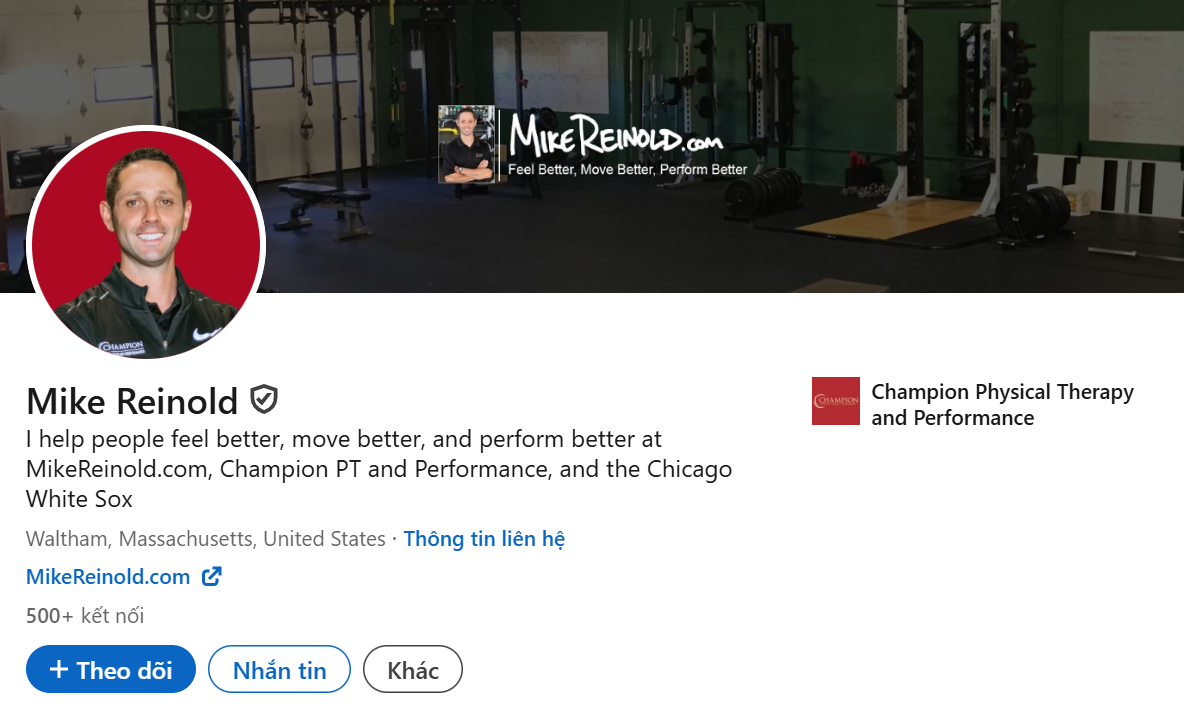
Mike Reinold is a physical therapist and sports medicine expert with over 20 years of experience treating professional athletes.
He holds certifications including PT, DPT, SCS, ATC, CSCS, and C-PS. Reinold was Head Athletic Trainer and Physical Therapist for the Boston Red Sox during their 2007 World Series Championship.
Reinold co-founded Champion Physical Therapy and Performance in Boston. He still works with Major League Baseball teams and players today.
Reinold teaches thousands of physical therapy and fitness professionals each year. His expertise in sport biomechanics, movement quality, and manual therapy makes him a top authority in shoulder rehabilitation.
His programs have helped physical therapists worldwide improve their skills and get better results with patients.
Be the first to review “Mike Reinold – Online Shoulder Evaluation and Treatment Course” Cancel reply
Related products
Hypnotherapy
Hypnotherapy
Hypnotherapy
Personal Development


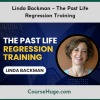
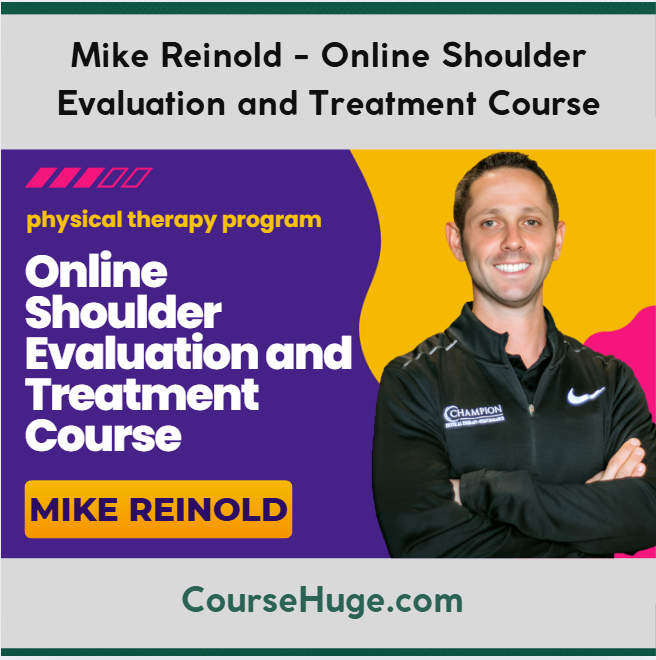
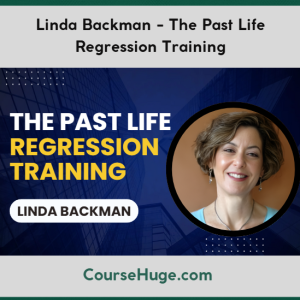
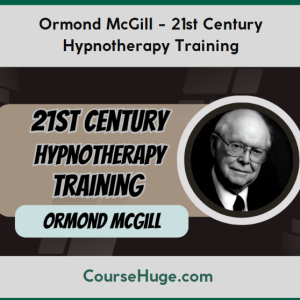
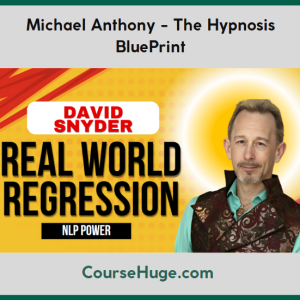

Reviews
There are no reviews yet.